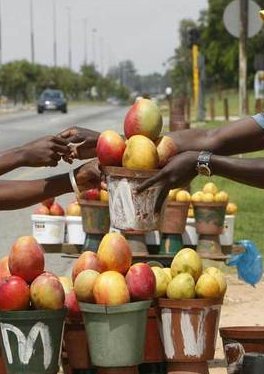Borrower Evaluation in the |
| Hari Srinivas | |
| Case Study Series E-110. August 2015. |
 Any individual or business needing funds for an activity is, in the process of a normal financial transaction, fully evaluated before a loan is approved.
Any individual or business needing funds for an activity is, in the process of a normal financial transaction, fully evaluated before a loan is approved.
Providing credit approval by a creditor (can be a bank, a business or other financial institutions) therefore depends on the ability and willingness of the borrower to return the money or pay for the goods obtained-plus interest-in a timely fashion.
The key criteria used by a formal financial institution to grant loans constitute the establishment of a borrower's credit worthiness. Credit worthiness, which encompasses the borrower's ability and willingness to pay, is one of many factors defining credit policies. Creditors and lenders utilize a number of financial tools to evaluate the credit worthiness of a potential borrower.
Criteria can include, for example, the current debts burden of the borrower, loan size, frequency of borrowing, loan period, and other such criteria.
These issues for the formal financial sector are well known and researched. But how would a borrower be evaluated in the informal sector? Most borrowers in the informal sector are poor, have very few assets, and hold unsteady, low-paying jobs.
What criteria can be used for low-income borrowers using suppliers in the informal credit markets (ICM)? A survey of 50 credit suppliers, falling into eight types of suppliers, including Money lenders, pawn brokers, rotating savings and credit associations (ROSCAs), chit funds, community groups, and friends/neighbours/family. The survey was conducted in Bangalore, India, Bangkok, Thailand, and Manila, Philippines, in order to understand the criteria they used to evaluate borrowers.
Contrary to popular belief of the exploitative tactics used by money lenders and the like, there are indeed established criteria that not only take into account the financial condition of the borrower, but also the relative risks that the lender faces (which, in fact, formal institutions are also primarily concerned with!).
The research shows that some or all of the following criteria is used for evaluation:
- Past repayment Record
- Prompt repayment of previous loans remains the single most important criteria for a borrower to enhance his or her credit worthiness with the ICM supplier. Frequent changes in the terms and conditions of the loan agreement (for example, a delay in repayment or renegotiation of interest rates) would similarly affect credit worthiness.
- Social Status
- The social status of the borrower, such as his place of origin, language spoken, and religion (in multi-cultural countries such as India), play an important role. Place of origin is important when we realize that most low-income families in urban areas are first, second or third generation migrants, and original social ties continue to influence social status.
- Acquaintance
- The length of acquaintance (in terms of number of years) and the type (family or business friend) are defining factors. Timberg (1984) cite the case of a money lender in India who lent only to borrowers who had transacted with his father, or their sons.
- Employment Status
- As with the formal sector, employment status (income, type and place of work) is used as a criteria to evaluate borrowers. Place of work is tied up with the fact that most families stay in settlements close to the place of work (or vice versa), and "keeping an eye" on the borrower becomes easy for the supplier, and ensures repayment.
- Recommendation
- A person having a good relationship with an ICM supplier, such as a settlement leader, a shop keeper may make a recommendation on behalf of the borrower for a loan. This is different from a guarantee, in that it does not involve any financial committment on the part of the recommender
- Collateral
- Most suppliers do not need collateral, as risk aversion is ensured by other means, such as close informational ties. But there are exceptions: some money lenders require collateral for exceptionally large loans; certain people's organization (or self-help groups) provide loans to its members only when they have saved a predetermined amount as "collateral"; pawn brokers demand collateral as an intrinsic part of their operations.
- Guarantee
- As with formal loans, third party guarantees are also seen in the ICM to ensure repayment, particularly for large loans.
These criteria, and the importance paid to them by the ICM suppliers, varied depending on the type of supplier. For example, while money lenders were more inclined to look at past repayment record or employment status, ROSCAs tended to place more emphasis on recommendations and social status.
The borrower evaluation criteria used in the ICMs dispell the image of a disorganized sector that exploits the low-paying status of the poor. The criteria play an important role in streamlining the informal market, and in improving confidence in the borrowers and suppliers. If these criteria are more stringently adopted and applied, it can also lay out the basis for potential links with formal commercial banks.
|
|
Hari Srinivas - hsrinivas@gdrc.org
 Return to the Virtual Library on Microcredit
Return to the Virtual Library on Microcredit
